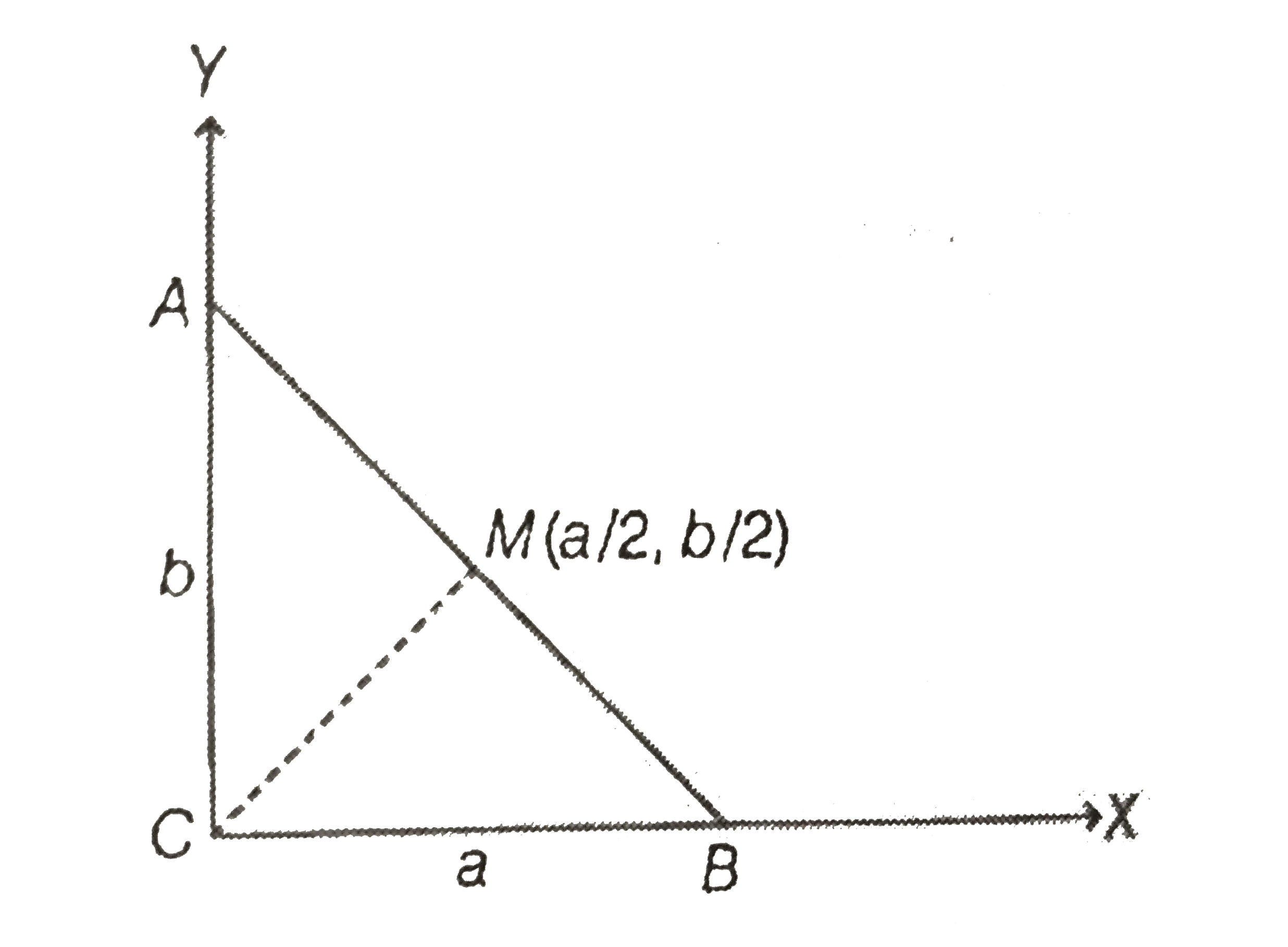In triangle ABC, let ∠c=π2. If r is the inradius and R is circumradius of the triangle, then 2(r+R) is equal to a+b (b) b+c c+a (d) a+b+c
A
a+b
B
b+c
C
c+a
D
a+b+c
Video Solution
Text Solution
The correct Answer is:A
Here, R2=MC2=14(a2+b2) [by distance from origin]
=14c2 [by Pythagoras theorem]

⇒ R=c2
Next, r=(s−c)tan(C/2)=(s−c)tanπ/4=s−c
∴ 2(r+R)=2r+2R=2s−2c+c
=a+b+c-c
= a + b
|
Topper's Solved these Questions
- PROPERTIES OF TRIANGLESBook:IIT JEE PREVIOUS YEARChapter: PROPERTIES OF TRIANGLESExercise:APPLICATIONS OF AREA, NAPIERS ANALOGY AND SOLUTION OF A TRIANGLE
Explore 17 Videos
- 3D GeometryBook:IIT JEE PREVIOUS YEARChapter:3D GeometryExercise:Equation of Plane Objective Question II (Integer Answer Type Question)
Explore 1 Video
Similar Questions
Knowledge Check
In triangle ABC, let ∠C=π/2. If r is the inradius and R is circumradius of the triangle, then 2(r+R) is equal to
Aa+bBb+cCc+aDa+b+cIn triangle ABC, R(b+c)=a√bc, where R is the circumradius of the triangle. Then the triangle is
Aisosceles but not rightBright but not isoscelesCright isoscelesDequilateralIf in ΔABC,8R2=a2+b2+c2, then the triangle ABC is
AequilateralBisoscelesCrt. angledDnone
In a triangle ASBC, let ∠C=π2.Ifr is the in radius and R is the circumrdius of the triangle then 2(r+R) is equal to (A) a+b (B) b+c (C) c+a (D) a+b+c
View SolutionIf R denotes circumradius, then in ΔABC,b2−c22aR is equal to
View SolutionIf R1 is the circumradius of the pedal triangle of a given triangle ABC,andR2 is the circumradius of the pedal triangle of the pedal triangle formed, and so on R3,R4 then the value of ∞∑i=1Ri, where R (circumradius) ofABC is 5 is 8 (b) 10 (c) 12 (d) 15
View SolutionIf the area of the triangle ABC is a2−(b−c)2 ,then its circumradius R=
View SolutionIn an equilateral triangle, the inradius and the circumradius are connected by r=4R b. r=R/2 c. r=R/3 d. none of these
View Solution
